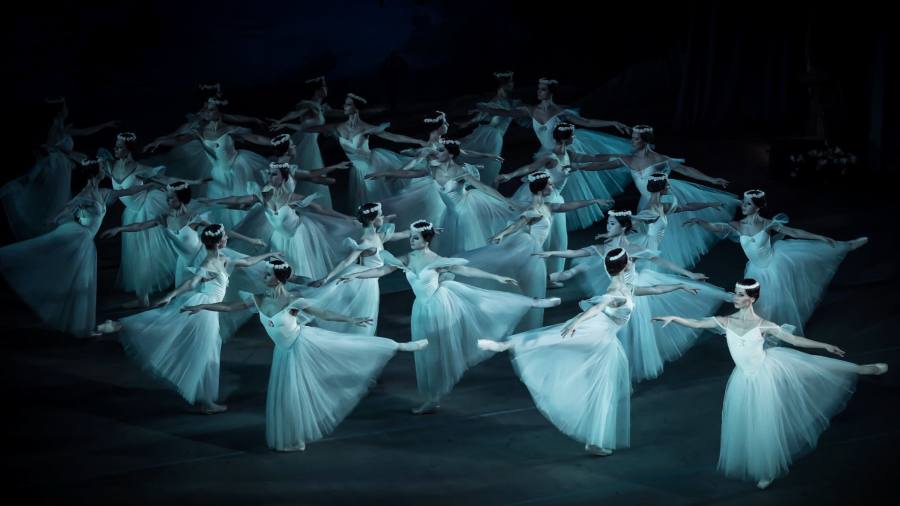While Russia’s war on Ukraine moves towards its second year, Ukrainian artists are taking the fight, symbolically, to Russian artistic turf. Ballet has long been a source of soft power for Moscow, with strategic foreign tours by state companies such as the Mariinsky and the Bolshoi even at the height of the cold war. This winter, the National Ballet of Ukraine reached Paris with a message of its own: Ukrainian culture isn’t going anywhere.
It delivered it with a quintessentially French ballet, the 19th-century classic Giselle, a tale of betrayed love that has become an unlikely beacon of peace. Last year, the United Ukrainian Ballet, a troupe made up mainly of dancers who fled the war, made its debut with Alexei Ratmansky’s version of the ballet.
The National Ballet of Ukraine, however, is the first state dance ensemble to make the journey abroad since the Russian invasion began. That it has continued to operate at all is mind-boggling. More than half of its dancers have left; some have died or fought on the frontline. Yet since May, performances have resumed in Kyiv, with sirens sometimes going off mid-show to direct audiences and artists to shelter. This week, even as 47 dancers are busy with Giselle in Paris, others are performing The Snow Queen at home every day.
Ballet dancers are used to hiding effort behind grace, yet under the circumstances there was something surreal about watching them pull together a very fine Giselle. At the Théâtre des Champs-Élysées, where the company is presented by Sarfati Productions, veteran principal Kateryna Alaieva delivered a Giselle without excess, finding real lightness and style in the second act. As Myrtha, Kateryna Kurchenko led the ghostly Wilis with airy brio, and the young Daria Manoilo brought a lively touch to her two soloist roles.
There were a few ragged moments in the first act but unstretched feet hardly matter in the midst of a war, and the 24-strong corps of Wilis had upper-body elegance and attitude to spare against Tetyana Bruni’s evocative backdrop. While a little too forceful at times, the mime is extremely clear in this production, which is credited to none other than Konstantin Sergeyev, a prominent choreographer and director of the Mariinsky (then Kirov) Ballet in Soviet times.
During the second world war, the Kirov’s St Petersburg home was bombed; its dancers were evacuated to Perm; Sergeyev and others staged defiant performances interrupted by air raids. Now Russia is inflicting some of the same suffering on Ukraine, whose own rich ballet history has long been in the shadow of its neighbour’s.
Will that change? The Bolshoi and the Mariinsky — in lockstep with Putin’s regime to the point of erasing the names of prominent dissidents, such as Ratmansky’s, from their repertoire — are unwelcome in the west. Meanwhile, for the foreseeable future, Ukrainian ballet stands for justice and peace.
★★★★☆
To January 5, theatrechampselysees.fr, opera.com.ua
Stay connected with us on social media platform for instant update click here to join our Twitter, & Facebook
We are now on Telegram. Click here to join our channel (@TechiUpdate) and stay updated with the latest Technology headlines.
For all the latest Art-Culture News Click Here

